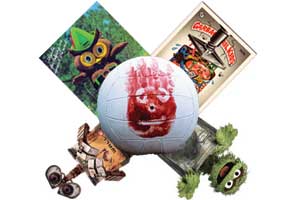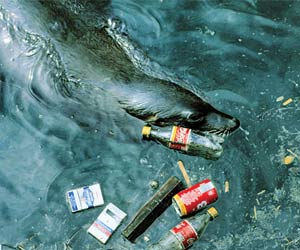a halo of squawking seagulls rings the Sims Metal Management recycling center along the Hudson River in Jersey City. This is where all of New York City’s curbside recycling goes for processing—more than 240,000 tons annually. Though all the recyclables that come here have some resale value, some simply aren’t worth the effort. At the very bottom of the recycling food chain are plastic shopping bags—and the dreaded “trommel snake.”
Plastic bags, regardless of whether they’re stamped with a recycling symbol, are not welcomed by New York’s recycling program, and like most such facilities, Sims can’t handle them. The stringy sacks gum up the mechanical sorters known as trommels, causing several work stoppages daily. Workers must then climb into the sorting cylinder and hack away at the trommel snake—a twisted bundle of film plastic as long as 20 feet. It goes into the plant’s towering trash heap, part of the 3.8 million tons of plastic film that go to landfills every year. Sims salvages what it can, though a half-ton of dirty plastic bags is worth no more than $20.
New Yorkers use more than 1 billion plastic bags a year; just 1 percent are recycled or resold. (Nationwide, the figure is 9.1 percent.) Last year, both the city and the state started requiring large stores to collect used bags and sell them to reprocessors. But the new laws don’t discourage the use of bags and provide no incentive for consumers to bring them in, so most still end up in the trash—or, when well-meaning residents put them in their recycling bins, they wind up feeding the trommel snake.
















